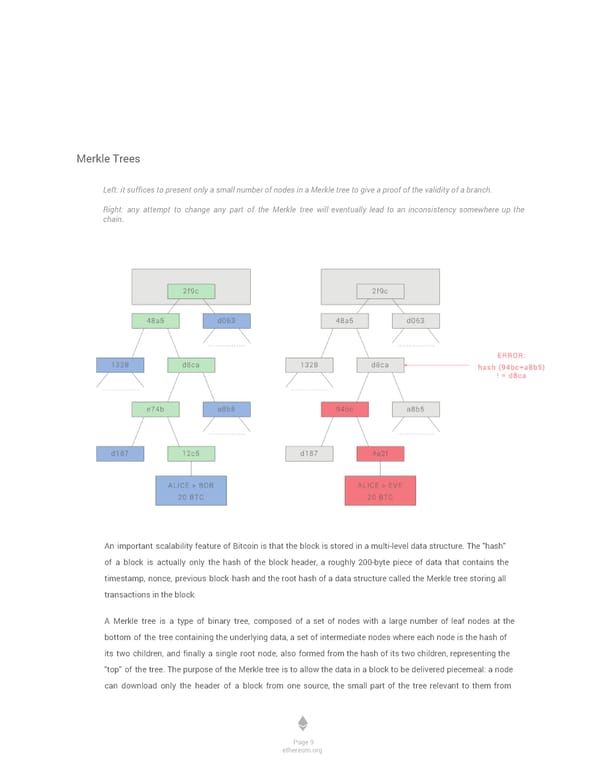Merkle Trees Left: it suffices to present only a small number of nodes in a Merkle tree to give a proof of the validity of a branch. Right: any attempt to change any part of the Merkle tree will eventually lead to an inconsistency somewhere up the chain. An important scalability feature of Bitcoin is that the block is stored in a multi-level data structure. The "hash" of a block is actually only the hash of the block header, a roughly 200-byte piece of data that contains the timestamp, nonce, previous block hash and the root hash of a data structure called the Merkle tree storing all transactions in the block. A Merkle tree is a type of binary tree, composed of a set of nodes with a large number of leaf nodes at the bottom of the tree containing the underlying data, a set of intermediate nodes where each node is the hash of its two children, and finally a single root node, also formed from the hash of its two children, representing the "top" of the tree. The purpose of the Merkle tree is to allow the data in a block to be delivered piecemeal: a node can download only the header of a block from one source, the small part of the tree relevant to them from Page 9 ethereum.org
 Ethereum White Paper by Vitalik Buterin Page 9 Page 11
Ethereum White Paper by Vitalik Buterin Page 9 Page 11